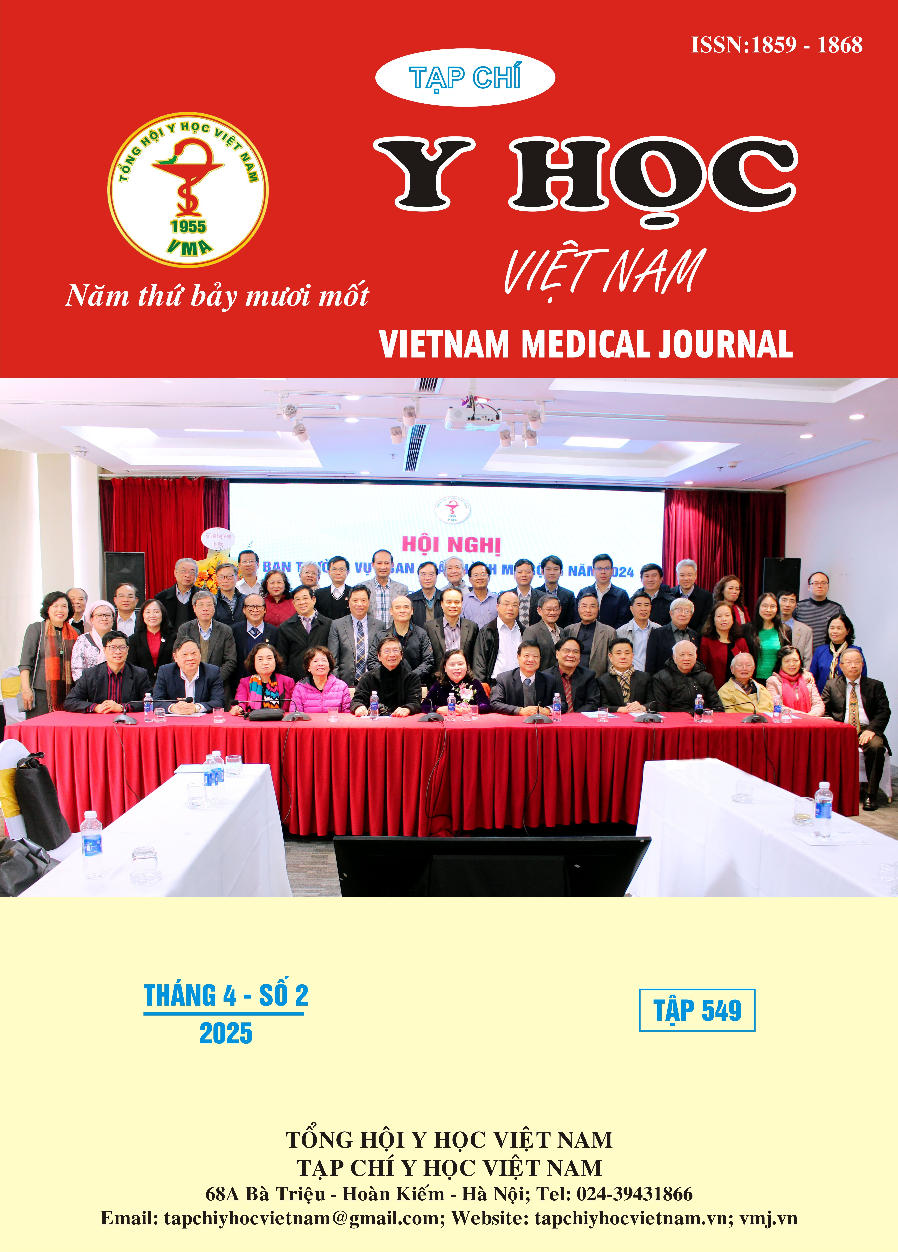KHẢO SÁT KHẢ NĂNG TĂNG SINH, DI CƯ VÀ BIỆT HOÁ CỦA TẾ BÀO GỐC TRUNG MÔ TỦY XƯƠNG NGƯỜI SAU BẢO QUẢN ĐÔNG LẠNH
Nội dung chính của bài viết
Tóm tắt
Mục tiêu: Nghiên cứu này được thực hiện để khảo sát khả năng tăng sinh, di cư và biệt hóa của tế bào gốc trung mô tủy xương (TBGTMTX) người sau khi đông lạnh bằng nitơ lỏng. Đối tượng và phương pháp nghiên cứu: Mẫu xương hàm từ 3 bệnh nhân được sử dụng để phân lập và nuôi cấy TBGTMTX theo quy trình của Phòng thí nghiệm Kỹ nghệ mô và Vật liệu y sinh, Trường Đại học Khoa học tự nhiên, Đại học Quốc Gia TP. Hồ Chí Minh. Sau đó, các TBGTMTX thế hệ P3 được đông lạnh trong nitơ lỏng trong 12 tháng. Các tế bào được rã đông và cấy chuyền sang thế hệ P4 để thực hiện các thử nghiệm tăng sinh, di cư và biệt hóa. Thí nghiệm tăng sinh: số lượng tế bào được đếm gián tiếp bằng cách đo mật độ quang ở bước sóng 570nm vào ngày 1, 3, 5, 7 và 9. Thí nghiệm di cư: tính phần trăm diện tích vùng vô bào của đường rạch sau 8 giờ và 24 giờ. Thí nghiệm biệt hóa: biệt hóa TBGTMTX bằng môi trường biệt hóa xương. Sau đó, thực hiện realtimePCR đối với các gen RUNX2, COL1A1 và OC. Số liệu được xử lý bằng phép kiểm thống kê phi tham số Mann-Whitney và Friedman ANOVA. Kết quả: Thí nghiệm tăng sinh cho thấy mật độ quang của nhóm TBGTMTX nuôi trong môi trường DMEM/F12 + 10% FBS tăng dần từ ngày 1, đạt đỉnh ở ngày 5 và giảm dần đến ngày 9 (p < 0,001). Trong khi đó ở nhóm môi trường DMEM/F12, mật độ quang giảm dần từ ngày 1 đến ngày 9 (p < 0,001). Thí nghiệm di cư cho thấy phần trăm diện tích đường rạch giảm dần tại thời điểm 8 giờ và 24 giờ (p = 0,001). Đối với thí nghiệm biệt hóa, phương pháp realtimePCR cho thấy sự biểu hiện của gen RUNX2 và COL1A1 sau khi các TBGTMTX tiếp xúc với môi trường biệt hóa xương 21 ngày. Tuy nhiên, không phát hiện được sự biểu hiện của gen OC. Kết luận: TBGTMTX vẫn thể hiện được khả năng tăng sinh, di cư và biệt hóa xương sau khi rã đông. Tuy nhiên, các thí nghiệm cần chọn thời gian đánh giá biệt hóa chuyên biệt cho từng gen để phản ánh kết quả đáng tin cậy hơn
Chi tiết bài viết
Từ khóa
tế bào gốc trung mô tủy xương, tăng sinh, di cư, biệt hóa xương, đông lạnh
Tài liệu tham khảo
2. Lee RH, Kim B, Choi I, et al. Characterization and expression analysis of mesenchymal stem cells from human bone marrow and adipose tissue. Cell Physiol Biochem. 2004;14(4-6):311-24. doi:10.1159/000080341
3. Bahsoun S, Coopman K, Akam EC. The impact of cryopreservation on bone marrow-derived mesenchymal stem cells: a systematic review. J Transl Med. Nov 29 2019;17(1):397. doi:10.1186/s12967-019-02136-7
4. Suarez-Arnedo A, Torres Figueroa F, Clavijo C, Arbeláez P, Cruz JC, Muñoz-Camargo C. An image J plugin for the high throughput image analysis of in vitro scratch wound healing assays. PLoS One. 2020;15(7):e0232565. doi:10.1371/ journal.pone.0232565
5. Rodriguez LG, Wu X, Guan JL. Wound-healing assay. Methods Mol Biol. 2005;294:23-9. doi:10.1385/1-59259-860-9:023
6. Achille V, Mantelli M, Arrigo G, et al. Cell-cycle phases and genetic profile of bone marrow-derived mesenchymal stromal cells expanded in vitro from healthy donors. J Cell Biochem. Jul 2011;112(7):1817-21. doi:10.1002/jcb.23100
7. Kulterer B, Friedl G, Jandrositz A, et al. Gene expression profiling of human mesenchymal stem cells derived from bone marrow during expansion and osteoblast differentiation. BMC Genomics. Mar 12 2007;8:70. doi:10.1186/1471-2164-8-70


